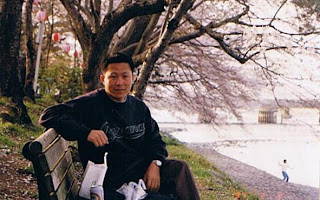
Just a few more shots of the temple. As you can see, it's built on stilts jutting out over the water, which is quite impressive. In low tide, the temples stilts are all exposed and it sits in a huge mud flat. Not so impressive. Most of the temple is closed, but you can walk around the walkways at the edge of the temple, and clamber up back to the pagoda as well. If you've got time, an overnight stay in one of the traditional ryokan is highly recommended by the guidebooks, although we didn't have time. And I would recommend against it if you're pregnant or not feeling very good, or you may have a bunch of pissed off locals on your hands.

















































